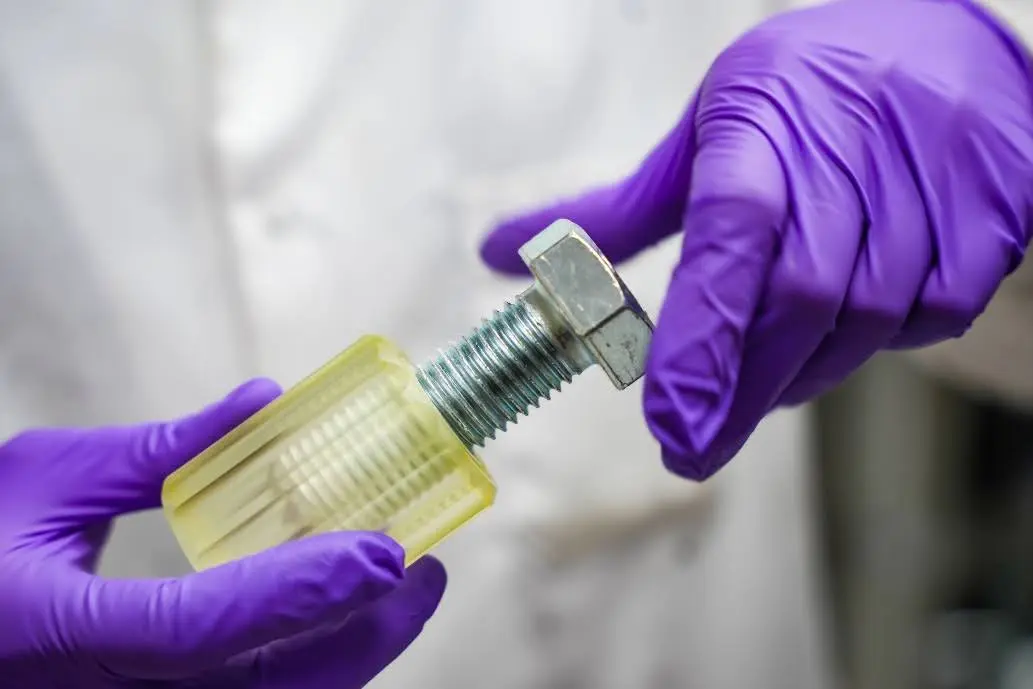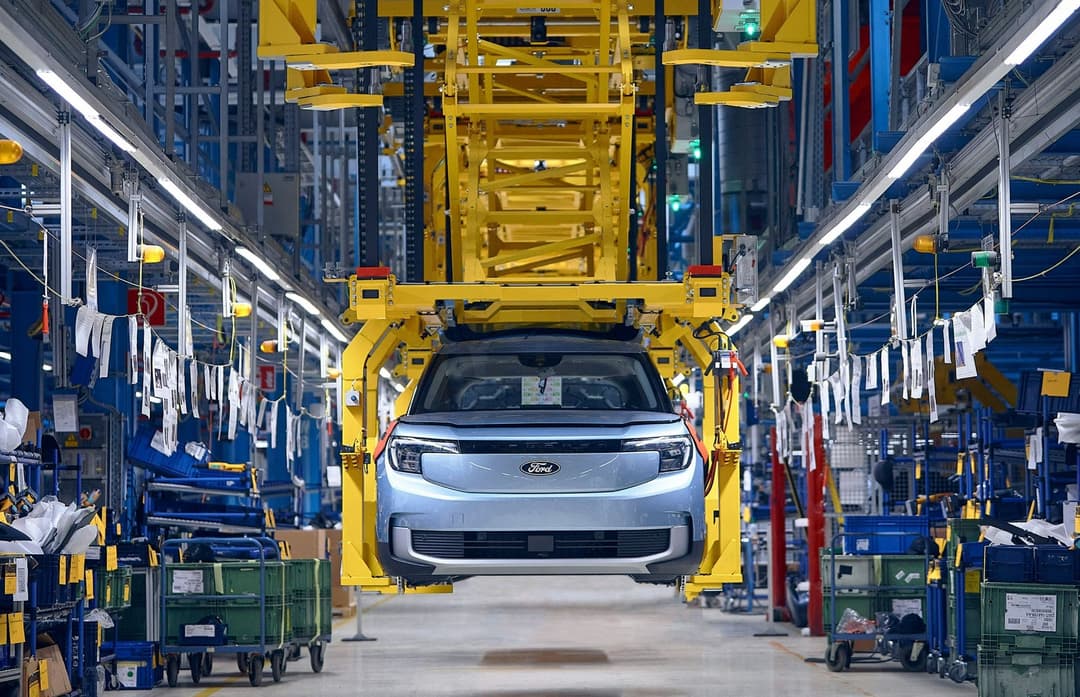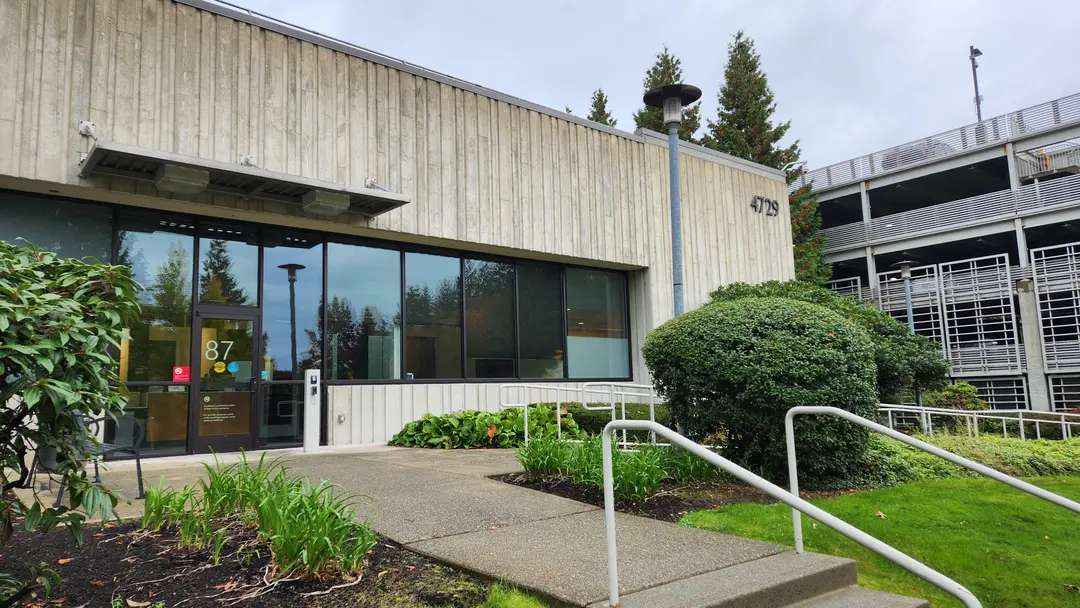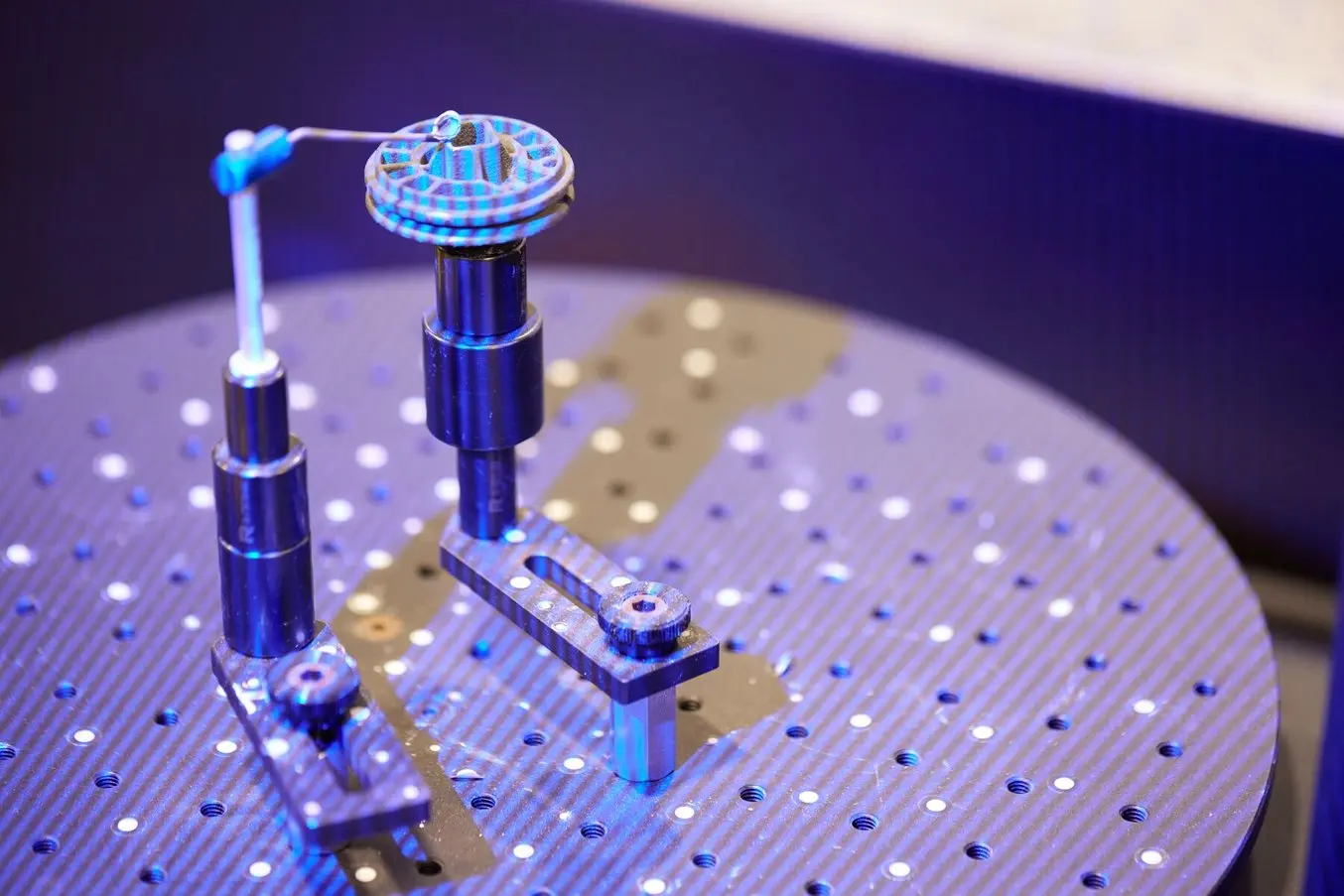
A 3D scanner expands the capabilities of a 3D printer, allowing you to replicate the shape of almost any object. Together, the two technologies create a powerful, digital workflow that can simplify and sophisticate processes in a range of industries.
Engineers, product designers, and researchers use 3D scanners as a faster and more efficient way to start constructing digital models, including:
-
Reverse engineering to create replacement parts, products with custom ergonomics, and more.
-
Replication and restoration of parts, especially in art and jewelry.
-
Consumer audio for creating custom earpieces.
-
Dental and medical applications for the creation of patient-specific devices.
-
Metrology to validate and measure the accuracy of manufactured objects.
3D scanning can also help to reverse engineer physical parts and, after fabrication, 3D scanning can support quality control and help to verify the accuracy of a 3D printed part. Many factors affect 3D print accuracy, and metrology-grade 3D scanners provide a clear picture of how a material performs for demanding applications; a scan of a deformed part can show you where to reinforce the design in the next revision.
The output from a 3D scanner is a mesh of triangles representing the surface of an object at a real-world scale. In some cases, the scan can be used directly to replicate objects without any CAD work. A hybrid workflow can also be powerful, where solid CAD models are combined with scanned 3D models. For example, customized ergonomics capture a physical imprint of a part of the human body, and integrate them with a mechanical design.
Types de technologies de numérisation 3D
There are multiple scanning technologies currently on the market, all offering their own advantages and weaknesses, from handheld scanners to desktop 3D scanners. The best 3D scanning system for you will depend on your application and budget.
Laser triangulation uses light projected onto the object to take up to millions of measurements (dots) per second. The light reflected from the dots back into the scanner’s sensor to help it capture the geometry of the object. These types of scanners are often the most accurate, and are great for highly detailed parts that have opaque surfaces.
Laser triangulation scanners do have limitations. For example, this technology is not used in most portable scanners because the laser dots need to project from a stable source, and the source has to be kept a close distance from the scanned object. Laser triangulation scanners don’t always work on transparent or shiny surfaces either. Typically, they require reflective markers to be applied onto the object, which need to be removed after use and can be an obstacle depending on the object being scanned.
Finally, the laser dots can be harmful to human eyes, so it is important to use extra safety precautions when scanning body parts with a laser triangulation system, or to check with your scanner manufacturer to make sure the device is eye-safe.
Structured light scanners (also known as white light scanners or blue light scanners) generally use a projector with two cameras at angles on either side. A pattern of light is projected and laid over the component being scanned, the cameras capture the ways in which the object deforms the light pattern, and then multiple images are integrated into a single 3D snapshot.
Structured light scanners are available in both stationary and portable format the technology is the most commonly used process for handheld 3D scanners. Structured light scanners are far more common in medical applications, since it is safe to use on both humans and animals and excels when an object is not perfectly still. Traditional white light scanners have been slower to scan than laser triangulation scanners.
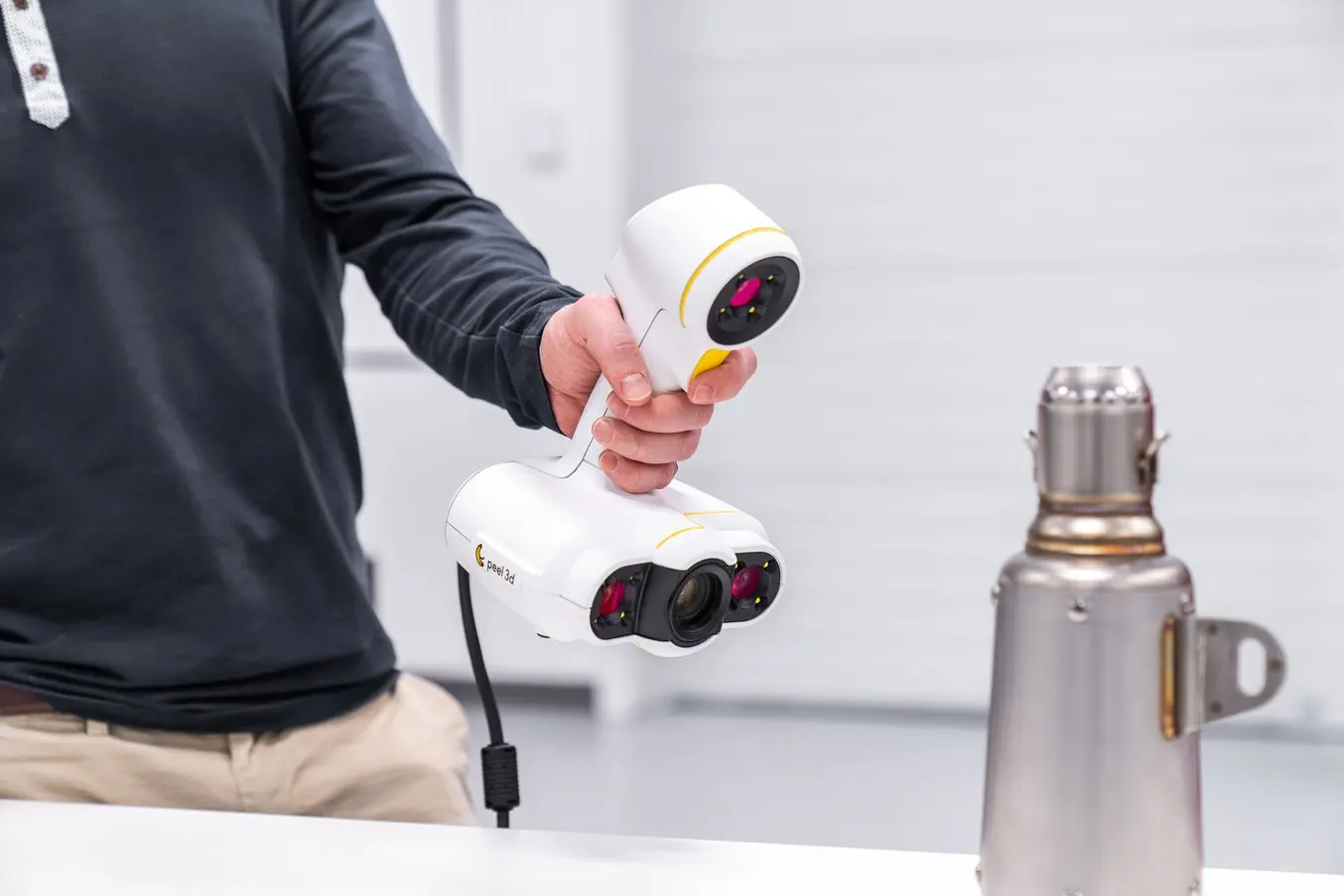
Le scan par lumière structurée est la technologie la plus couramment utilisée dans les scanners 3D portatifs.
Depth-sensing cameras project a field of dots in infrared (IR) to sample a 3D scene. Depth-sensing cameras are simple to use and are the least expensive scanning option, but their accuracy and resolution are low, and fine details are sometimes lost. Large objects may be captured with depth-sensing cameras, but accuracy declines with increased distance from the subject and at steeper angles to the camera.
Photogrammetry means the act of deriving precise measurements from photographs. It involves taking a set of overlapping photos of an object, building, person, or environment, and converting them into a 3D model using a number of computer algorithms. This is the most commonly used method when creating a 3D scan with a smartphone, since modern phone cameras are capable of capturing and combining a large number of photos. Photogrammetry should be considered the least expensive and least accurate method for creating 3D prints, and is not suitable for serious business applications.
LiDAR (light detection and ranging) sensors can be found on some higher-end smartphones and tablets, such as the latest versions of the iPhone Pro and the iPad Pro. This has made the iPhone and iPad viable scanners for those with only occasional scanning needs, offering performance a step above devices that only have access to photogrammetry. Applications that generate 3D mesh files via your smartphone’s or tablet's camera should be seen as the floor for entry-level scanning; users should expect additional work in their CAD software to remove gaps in meshes and improve the 3D model for applications like sending it to a professional 3D printer. Smartphones use fewer light points when scanning objects, resulting in less detail than a true, stand-alone scanner. iPhones are good substitutes for scanners if you have significant CAD design ability or need to transfer basic models into a digital space.
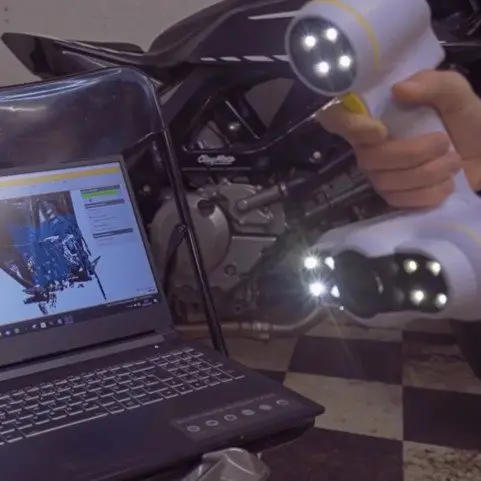
Comment la numérisation 3D soutient les processus de développement de produit modernes
Visionnez ce webinaire en collaboration avec Peel 3D pour découvrir comment intégrer des scanners 3D à votre processus de travail d’impression 3D afin de faire passer votre processus de développement produit au niveau supérieur.
How To Choose the Best 3D Scanner To Use With Your 3D Printer
Précision des scanners 3D vs. Prix
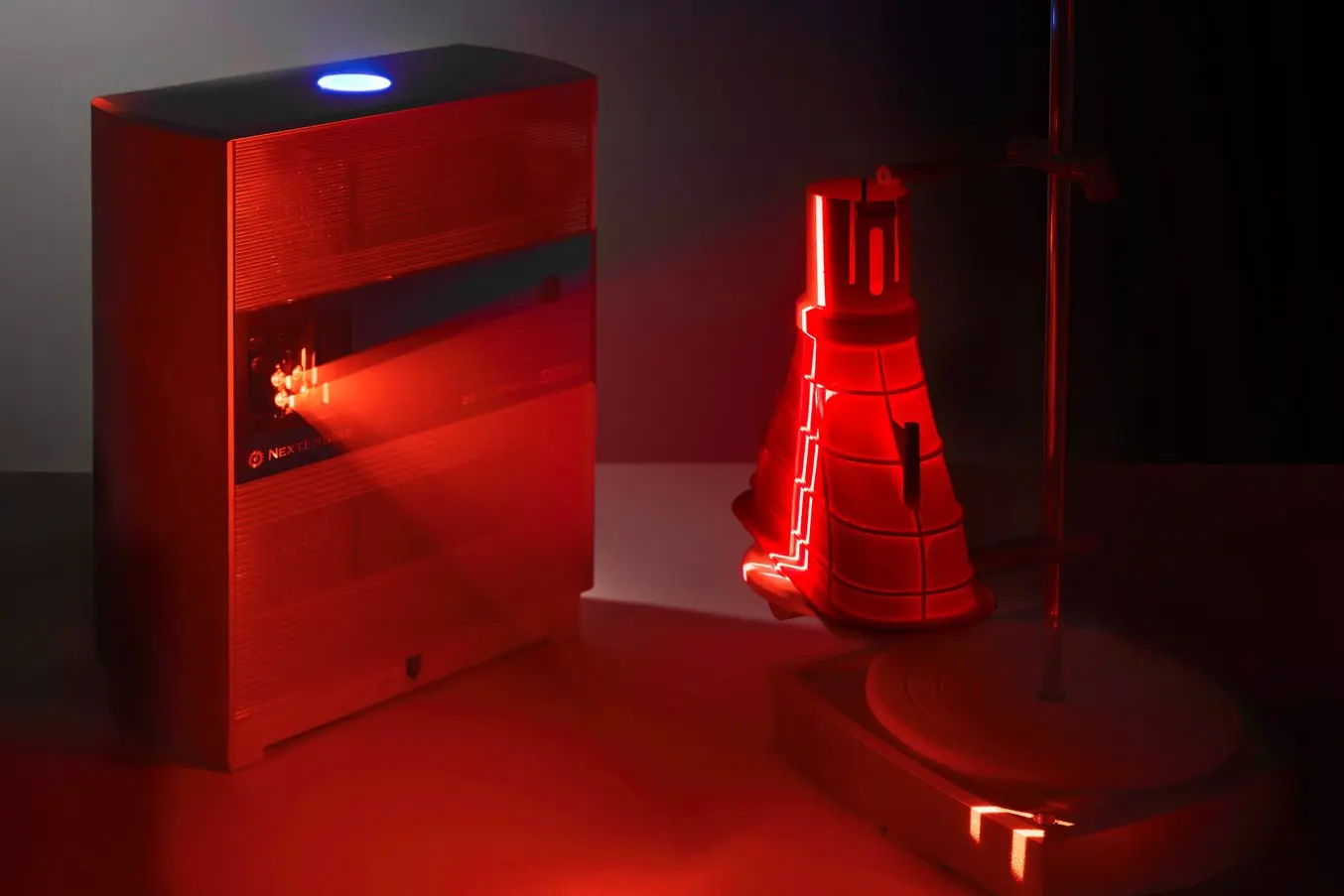
La précision de numérisation varie considérablement d’une technologie de scan à l’autre, et plus de précision implique généralement un prix plus élevé. Les tolérances requises pour la pièce finale peuvent vous aider à déterminer la précision que nécessite votre scanner 3D.
| Prix élevé, précision élevée (15 000 € et plus) | Higher Price and Accuracy ($10,000 and under) | More Affordable (under $2,000) | Low Price, Low Accuracy |
|---|---|---|---|
| Hexagon Atlascan Max Zeiss T-Scan Hawk 2 Shining 3D EinScan Libre Creaform HandyScan Silver Series | Shining 3D EinScan SP V2 Peel 3D Peel 3 Shining 3D EinScan HX2 | Revopoint Miraco Plus Revopoint MetroX Matter and Form Three Creality Raptor Pro | iPhone Pro & iPad Pro Revopoint Inspire Shining 3D Einstar Structure Sensor 3 |
With accuracy in the range of 0.1 mm or better, laser and structured light scanners are a good fit for professional applications and alongside high-resolution 3D printers. Formlabs stereolithography (SLA) resin 3D printers (such as Form 4 Series 3D printers) produce parts at a similar accuracy of many desktop 3D scanners.
Besides the accuracy between measured points and their actual location, scanners also vary in terms of resolution, which is the distance between captured points at a given scan distance. This means that details on the scanned object that are smaller than the scanner’s resolution won’t be captured. For example, a highly accurate 3D scanner with a lower resolution might detect the general shape of jewelry on a statue, but not clearly show individual details on a ring or necklace. Depending on your project requirements, this may or may not be a dealbreaker.
An easy way to remember these metrics is: accuracy is the measurement error between the part and digital value. Resolution refers to the density of measurements.
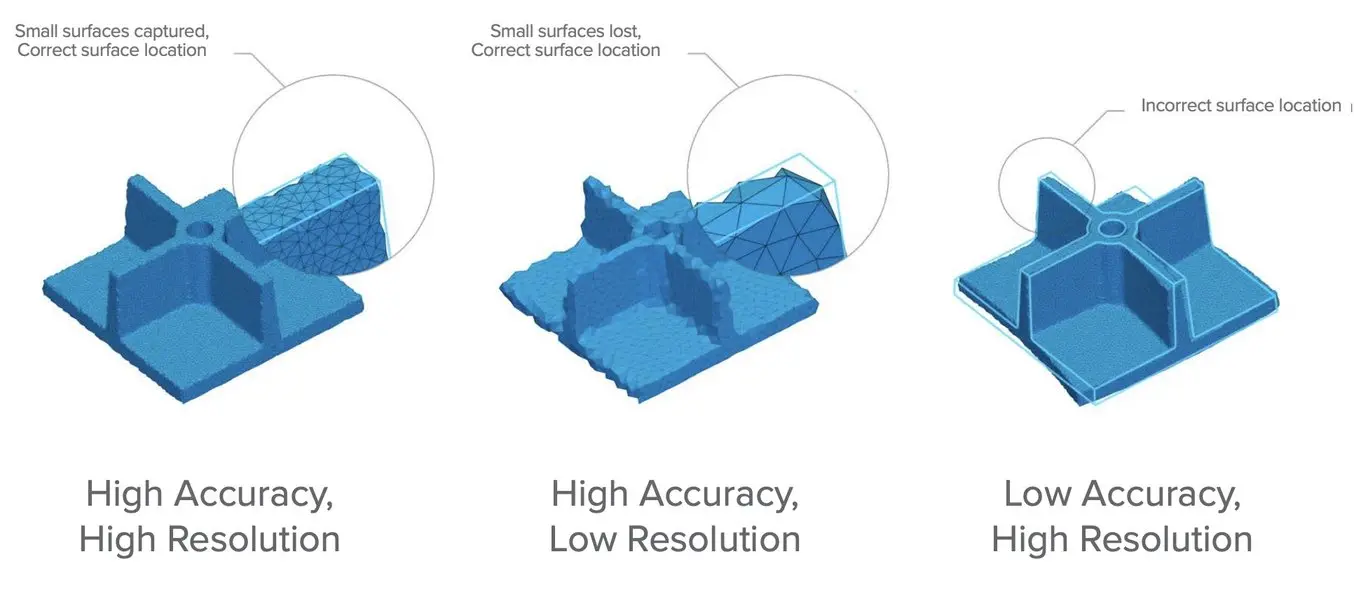
Accuracy can mean slightly different things depending on the manufacturer and 3D scanning technology. For example, the accuracy of handheld scanners depends on the distance to the subject and the quality of scan reconstruction, while desktop scanners have consistent accuracy within the constrained scan volume. If you are considering buying a 3D scanner for precise measurement, make sure to compare like to like.
In general, structured light scanning provides the best resolution and accuracy when compared to laser scanning. For some artistic use-cases for 3D scanning you may need a lot of detail, while overall accuracy is less important especially if you don’t require your part to fit precisely with other parts in an assembly. In these cases, photogrammetry is an excellent low-cost option to explore.
Both depth-sensing cameras and photogrammetry are a good solution for scanning large objects in order to create 3D printed scale models and also offer enough accuracy for capturing the shape of the human body.
Several entry-level laser scanners are available using technology similar to higher-end systems. These scanners are a great way to start replicating small objects at 1:1 scale. As one would expect, the accuracy of entry-level laser 3D scanners is lower than a high-end scanner, but they can easily provide enough detail to replicate small decorative objects and figures where accuracy is not critical.
If you only have occasional 3D scanning needs, digitization services can scan your object, as well as perform CAD translation and accuracy inspection.
3D Scanner Volume and Coverage
La zone qu’un scanner 3D peut capturer varie considérablement d’un scanner à l’autre. Trouvez un scanner qui corresponde à vos besoins en termes de taille et en résolution, sans pour autant les dépasser, car le coût augmente généralement avec le volume de scan.
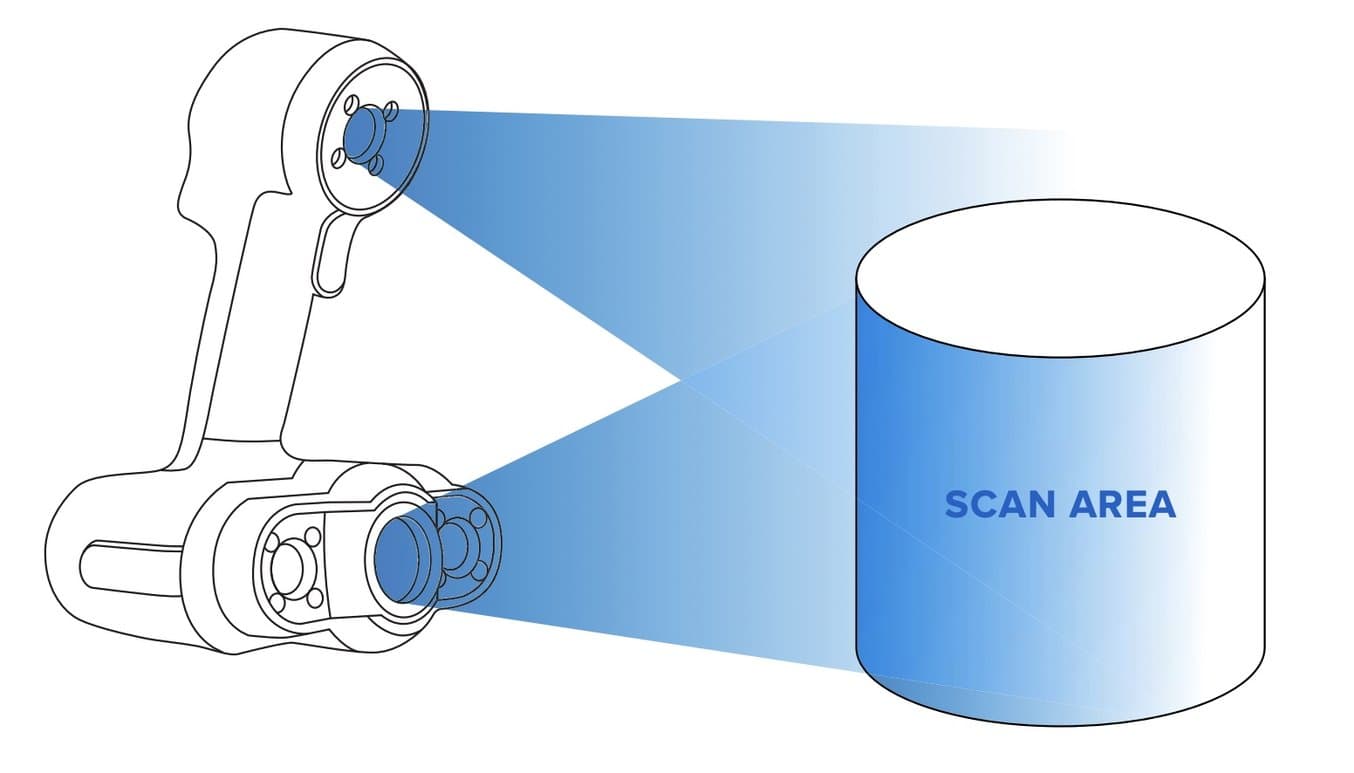
Handheld scanners can be manually moved around the object and have fewer size constraints than desktop models. Most inexpensive handheld scanners can capture objects from the size of a basketball to an entire room. High-end handheld scanners have an even wider range, and fill the niche for all objects that require precise measurements, but cannot fit in a desktop scanner. Handheld scanners are also able to capture objects nearly instantaneously, which makes them well-suited for taking human measurements (where the subject is not perfectly still) for ergonomics and medical applications.
If the area of the model can’t be seen by the scanner, it will cause a gap in the model. You can automatically repair small missing sections with most scan software programs to create a 3D printable model. However, repaired holes are rarely accurate to the original object. For parts that demand close to perfect accuracy, auto-repair of gaps or holes will not be sufficient. Read our MeshMixer tutorial for advanced tips to edit and repair 3D files for 3D printing.
Many scanners use turntables to increase what the scanner can see. The sophistication of a scanner’s turntable affects how easily and completely the object is captured: some scanners have the ability to move the object around multiple axes, imaging the object from more angles. This feature is important when reverse engineering plastic parts with deep recesses and ribs, which are impossible to capture from a single angle.
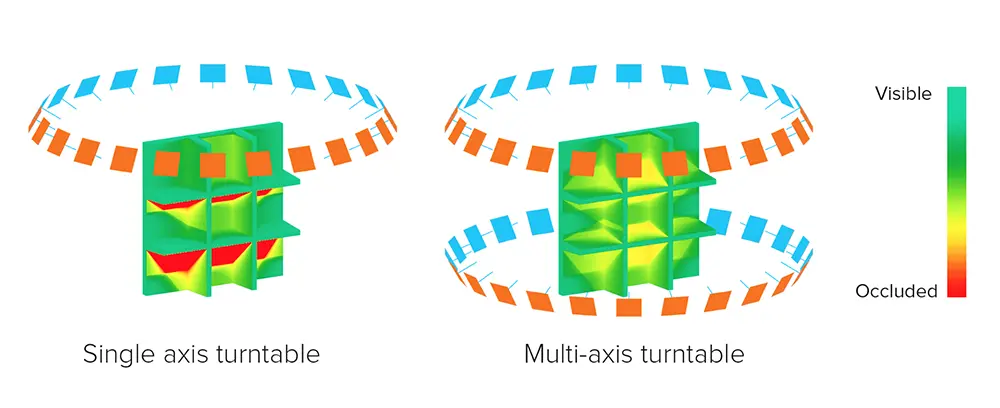
Les scanners peuvent faire pivoter l'objet pour capturer les zones obstruées. Les régions rouges sont obstruées et ne seront pas numérisées. Les zones à relief profond sont difficiles à capturer avec un simple plateau rotatif à axe unique en raison du manque de visibilité.
Les questions de coûts sont assez simples : le montant que vous souhaitez investir dans un scanner reflète le budget de votre entreprise et l’utilisation prévue de votre scanner. Les scanners les plus chers pourront capturer les petits objets et créer des maillages plus détaillés, sans qu'il y ait besoin de trop les retoucher dans un logiciel CAO. Les scanners portables sont généralement les plus onéreux, du fait de leur maniabilité. Il existe de nombreux types de scanners bon marché, mais il faut tout savoir s'y retrouver.
Organigramme : choisir le meilleur scanner 3D pour votre application
Utilisez cet organigramme pour déterminer le scanner dont vous avez besoin en fonction de la précision, du volume de numérisation et du budget disponible.
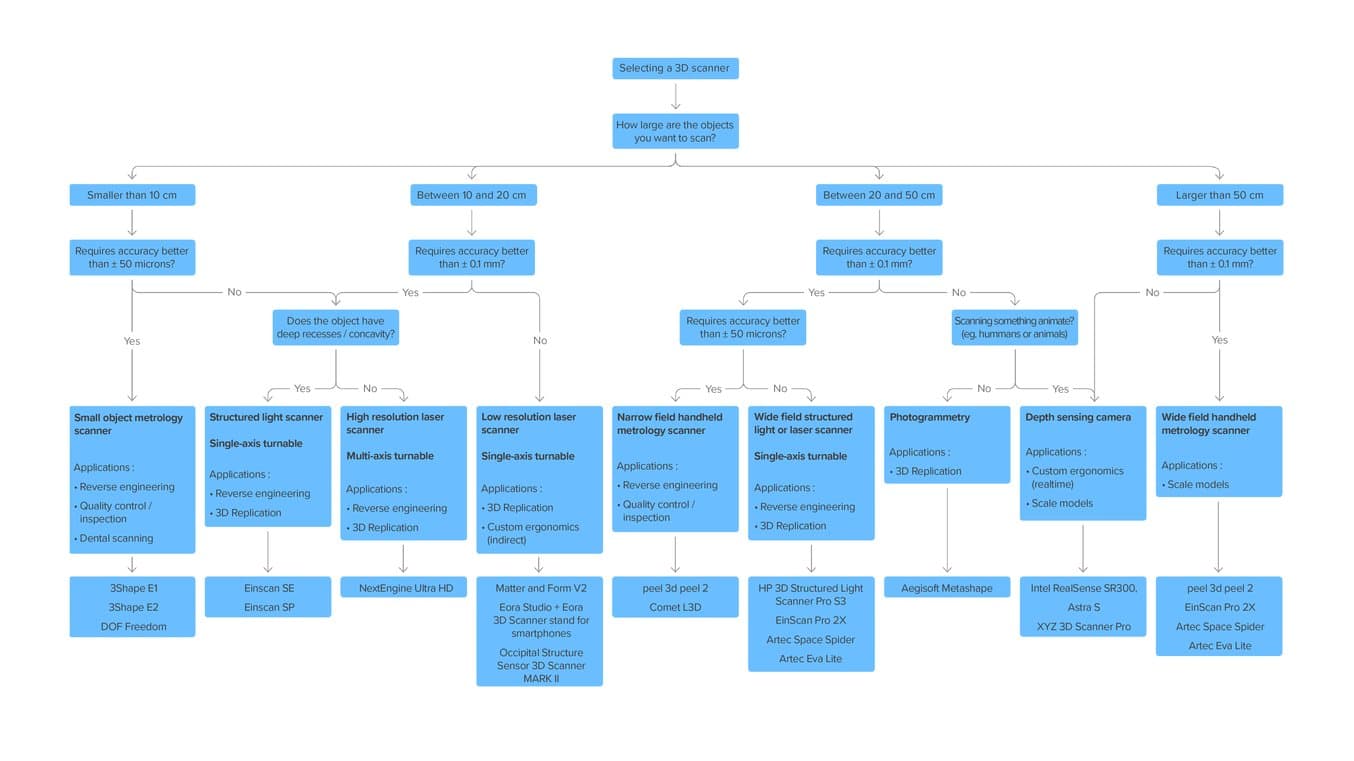
Téléchargez la version haute résolution de cette infographie ici.
Comment la numérisation 3D complète-t-elle l’impression 3D ?
3D scanning is a valuable tool for creating parts that reference or incorporate older designs, where the original CAD design isn’t accessible. Once a part is designed, it can then be 3D printed as needed in a variety of high-performance materials. Create replacement parts that match the original design of damaged existing pieces, or use reverse engineering processes to integrate complex surfaces from existing objects into 3D printable jigs, which are useful when modifying mass manufactured and handcrafted products.
Learn more about reverse engineering parts here.
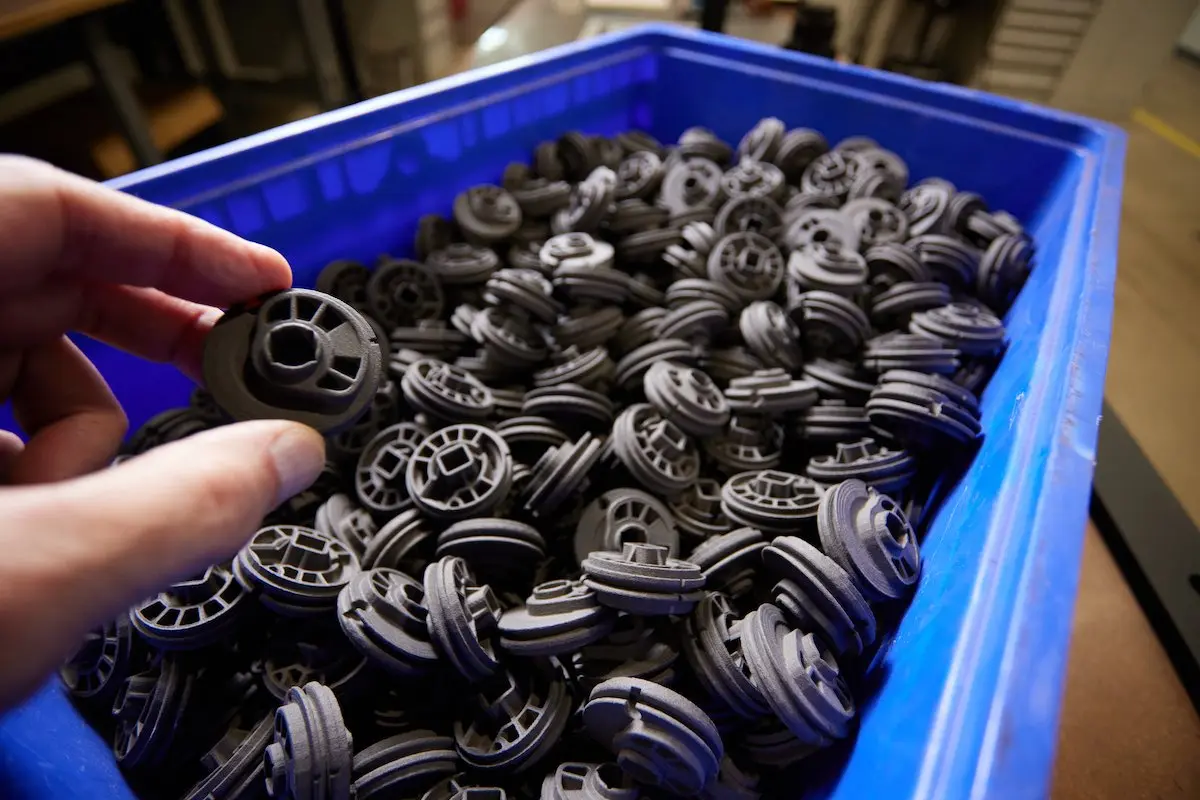
At Brose, an automative supplier, exisiting components are 3D scanned and alterted before being manufactured via 3D printing.

At Romans Ferrari, a pediatric rehabilitation center, 3D scanning and 3D printing are used to create custom compressive masks for treating facial burns.

At Brose, an automative supplier, exisiting components are 3D scanned and alterted before being manufactured via 3D printing.
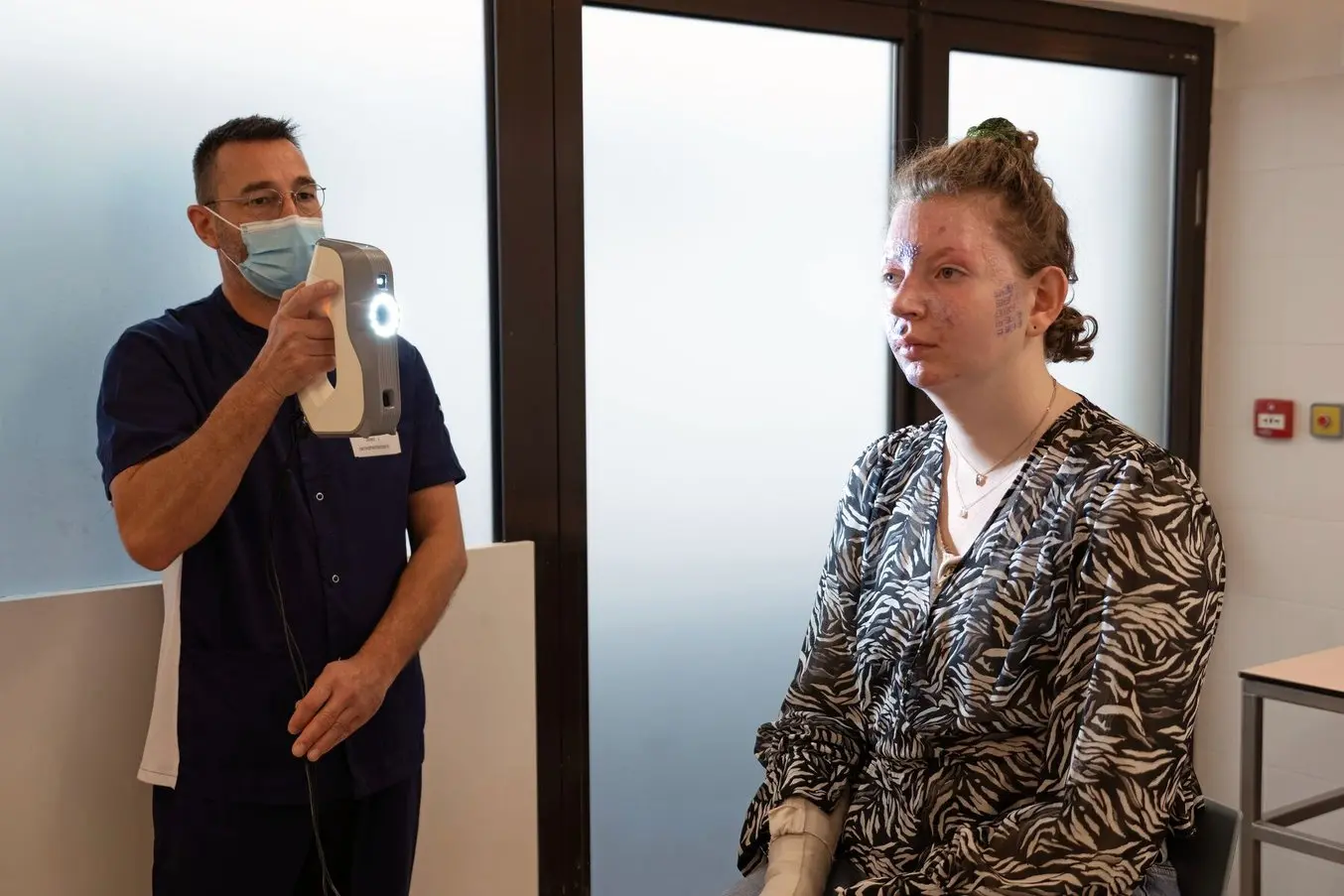
At Romans Ferrari, a pediatric rehabilitation center, 3D scanning and 3D printing are used to create custom compressive masks for treating facial burns.
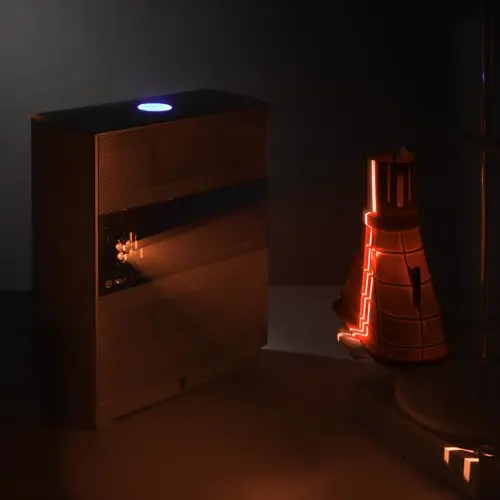
De la numérisation 3D à l’impression 3D : rétro-ingénierie rapide pour la restauration de machines, les gabarits d’assemblage et les produits d’après-vente
Regardez ce webinaire et découvrez comment utiliser la numérisation 3D pour améliorer la conception et la production des pièces en la combinant à la rétro-ingénierie CAO et à l’impression 3D.
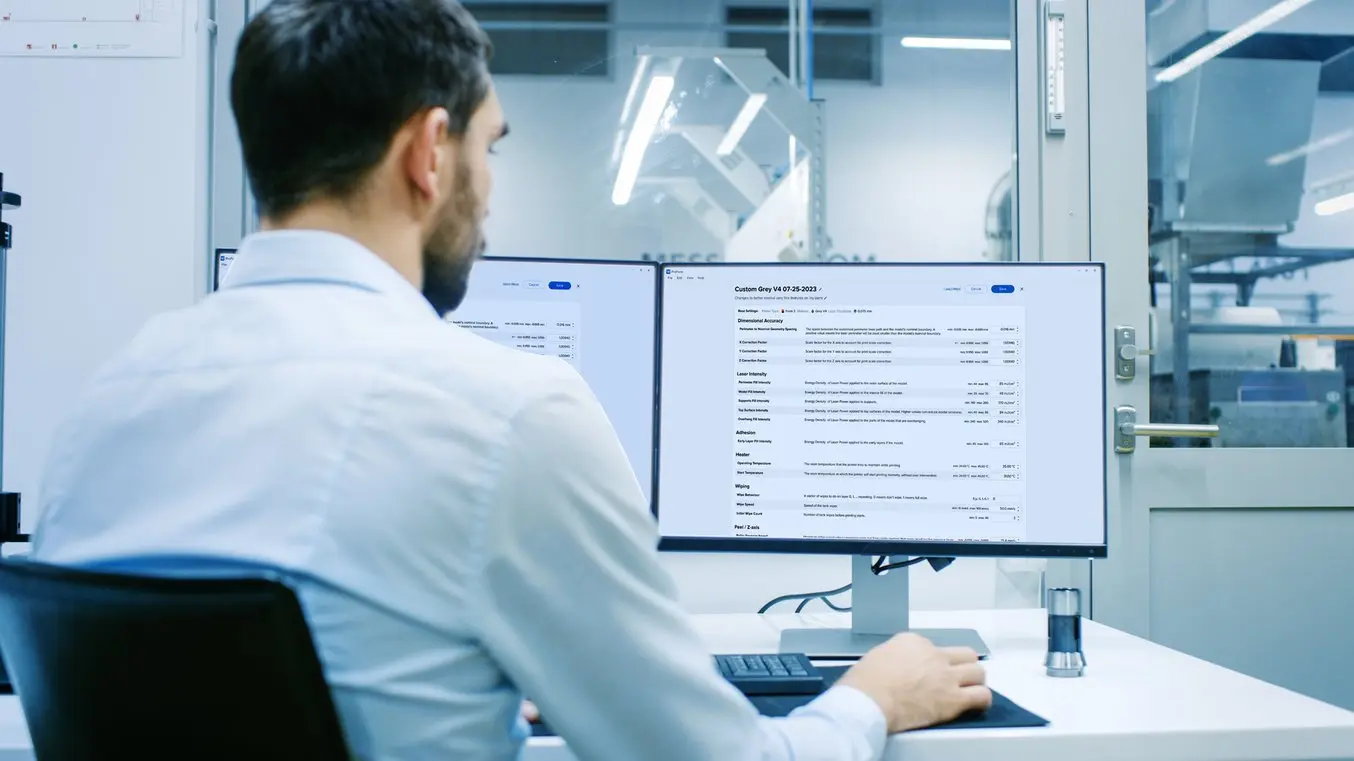
Parlez à notre équipe commerciale
Que vous ayez besoin de prototyper à grande vitesse ou de produire des pièces finales, nous sommes là pour vous aider. L’équipe commerciale de Formlabs est composée de spécialistes dévoués qui savent exactement comment vous assister et répondre aux besoins de votre société.
Testing 3D Printing Accuracy: Metrology and High-Accuracy 3D Scanning
Applied metrology is the measurement of part dimensions, and is essential to all manufacturing processes, including 3D printing. One way Formlabs uses 3D scanning during product development is to measure and validate the accuracy of new SLA materials. 3D scanning is the most versatile metrology tool for 3D printed parts, which tend to have more complex surfaces than could be easily measured with a micrometre, or even a CMM (contact measuring machine).
Metrology-grade scanners and scan software allow you to measure accuracy by comparing the scan output to the source model. The models are aligned based on selected reference points and the software performs a deviation analysis, identifying areas where the printed surface differs from the source file.
Deviation analysis paints a statistical picture of part accuracy. However, accuracy is not always perfectly consistent across a 3D-printed part. For instance, supported surfaces are less accurate than top surfaces, and post-curing shrinkage has a greater effect on a part across large spans.
Développer un processus de travail numérique avec la numérisation et l'impression 3D

3D scanners and 3D printers are essential parts of digital workflows across industries, empowering a variety of workflows in engineering, product design, and more.
Learn more about bringing your designs to life with 3D printing; explore stereolithography (SLA) and selective laser sintering (SLS) 3D printing technologies or request a free sample part to evaluate Formlabs materials for yourself.
